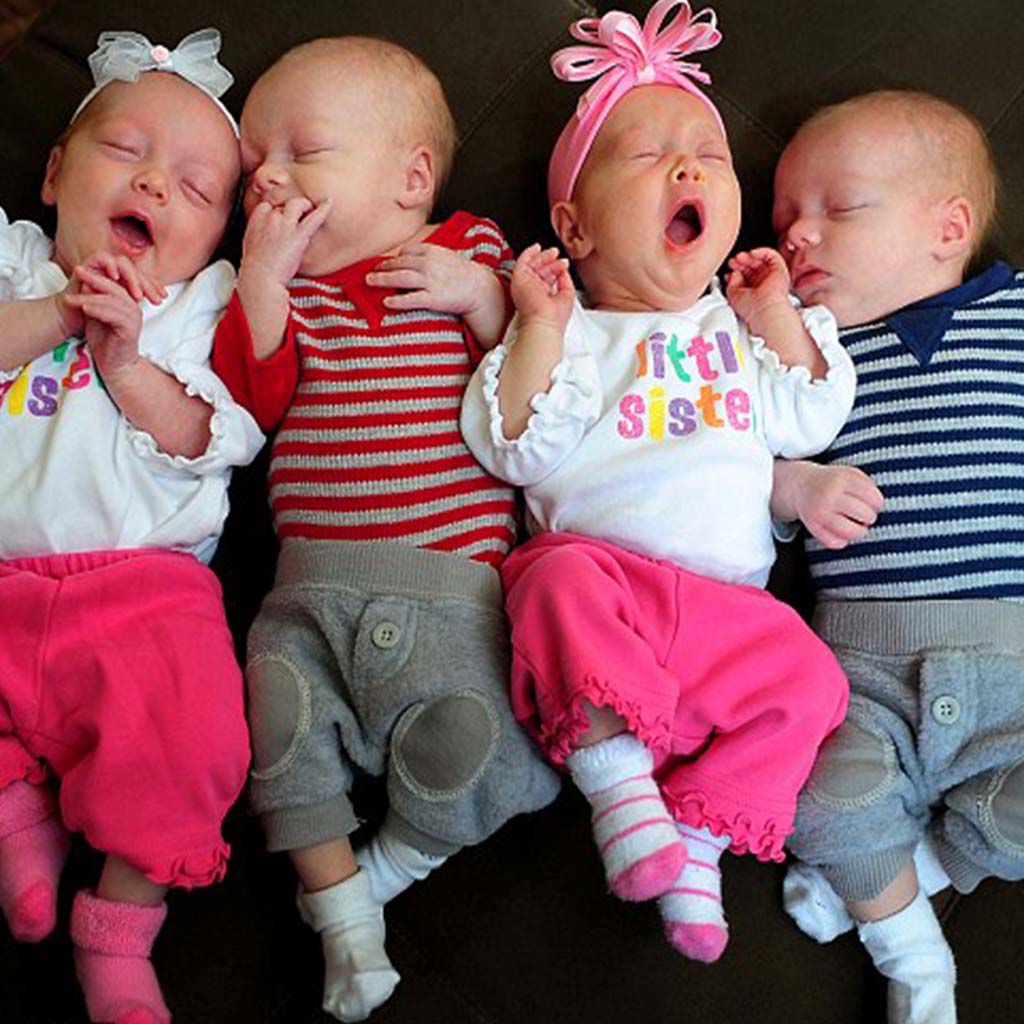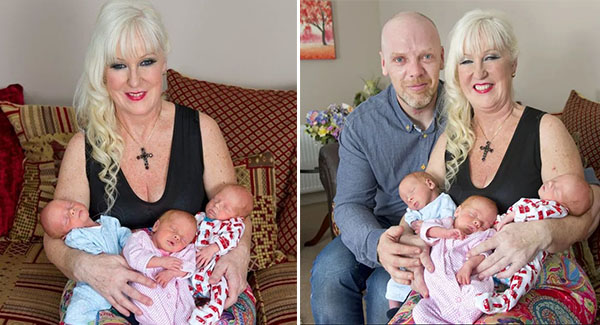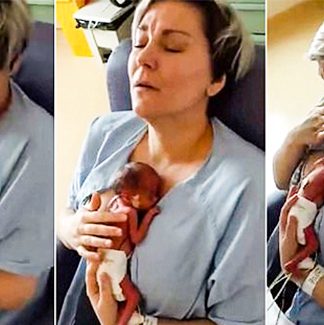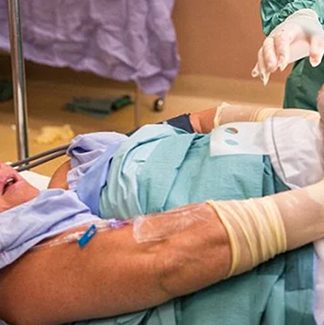With one miracle baby already conceived through IVF, the Crawfords thought one more would be another blessing for the family. However, they couldn’t believe their luck when the doctor revealed that there were four heartbeats.
In fact, Miranda and Josh Crawford defied medical expectations by conceiving two sets of identical twins in addition to the four heartbeats.


The couple became parents to a baby girl, Joslyn, in 2009, after only one round of in vitro fertilisation.
When they made the decision to try for another child, Mrs. Crawford miscarried. They persisted, and with medical insurance covering the majority of the cost of in vitro, they made the decision to try again.
As in the previous attempts, Mrs Crawford’s doctors transferred just two embryos, which is the safest thing to do for a woman of her age – 34.
About six weeks later, after two ultrasounds, what the couple hoped would be one or maybe two heartbeats was four.


Mrs Crawford’s doctor Seth Katz told the Charlotte Observer: ‘I told her, “there’s quads”, and she was like, “you’re kidding”. And I said, “I don’t kid about this”. Then I showed her the heartbeats.’
But the babies weren’t just quads, they were two boys in one placenta and two girls in another.
One set of identical twins only develops in 2% of pregnancies. The likelihood of having two sets is roughly one in 10,000.
One embryo will split around twice a year, according to Dr. Katz. It’s extremely unusual to have both implants and both split. For the rest of my career, I won’t witness this happening once more.
Because of the risks involved both for the unborn babies and the mother, a specialist told the Crawfords that one option they should consider was to have a reduction – which would entail aborting some of the foetuses for the safety of the others.
But Mrs Crawford said: ‘It was never an option. We put it in Gods hands.’
She had a trouble-free pregnancy for the majority of it, but she did get gestational diabetes. By the time her pregnancy was over, she could hardly move, save for bathroom breaks, and had acquired 60 pounds with a stomach that stretched more than five feet in circumference.
Quads typically arrive at birth at 28 weeks, but Mrs. Crawford was able to carry them until 34 weeks, at which point they were all delivered through C-section and spent just three weeks in the intensive care unit.
The five-parent family is getting used to their larger family and has devised a method for feeding four infants at once.
The Charlotte Observer reports that neighbors, friends, and family have donated hundreds of packs of diapers as well as cribs, car seats, baby swings, strollers, and bassinets.
Even meals have been given to the couple, and assistance with feedings has been offered. Formula is donated to the infants.
Mrs Crawford’s aunt arrives every Wednesday from Anderson to help care for two-year-old Joslyn and the babies.
Although she doesn’t want to go back to work, their parents will alternate visits when Mr. Crawford returns later this month.
He told the Charlotte Observer: ‘We thought it would be pure chaos. But it’s been controlled chaos.’












